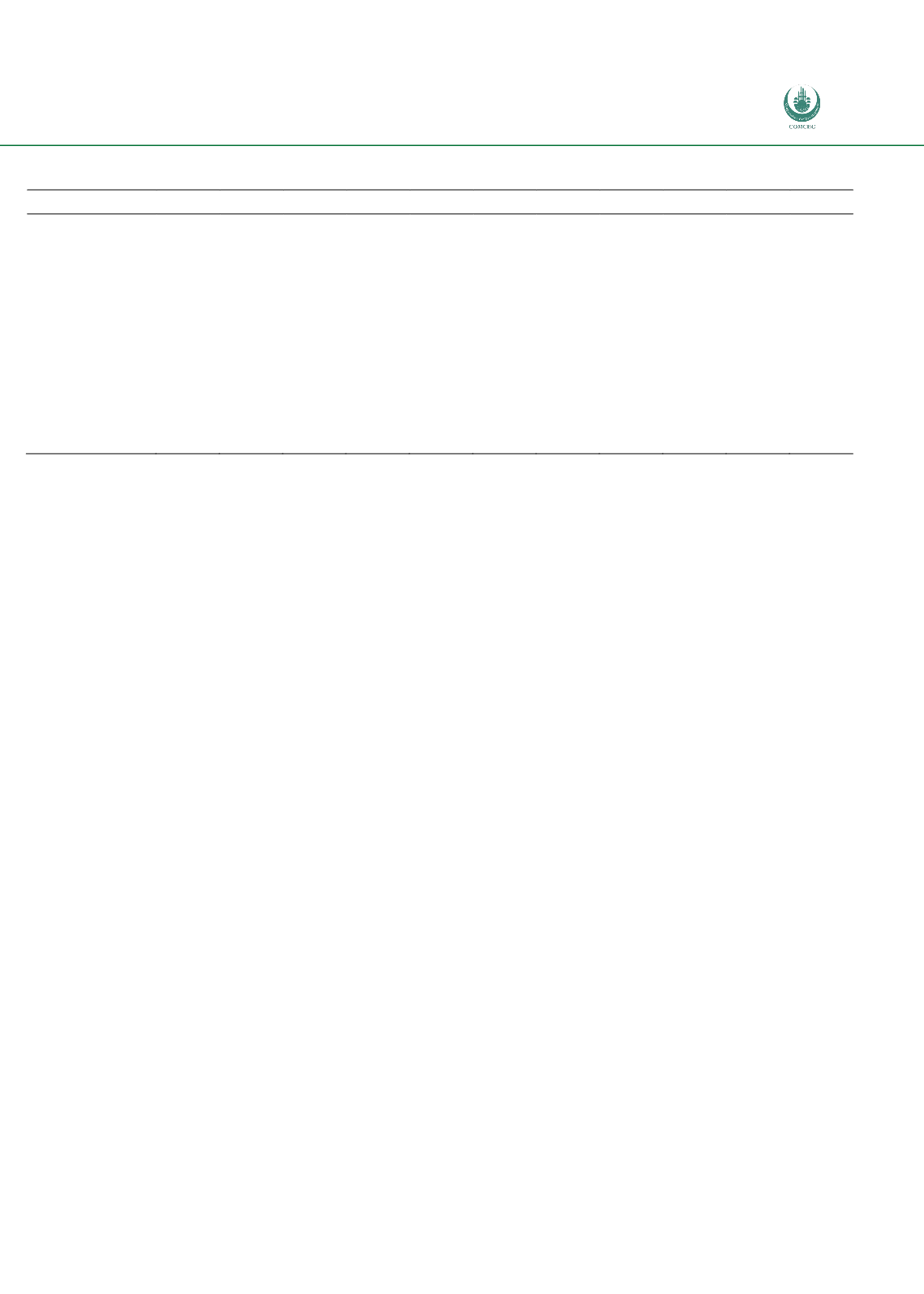

Preferential Trade Agreements and Trade Liberalization Efforts in the OIC Member States
With Special Emphasis on the TPS-OIC
165
Table 34: FK Index of Export Similarity Between the TPS and the World (non-oil exports)
Reporter
2003
2004
2005
2006
2007
2008
2009
2010
2011
2012
2013
Bahrain
0.22
0.20
0.19
0.17
0.16
0.27
0.28
0.23
0.25
Bangladesh
0.14
0.19
0.24
0.31
0.37
Jordan
0.44
0.44
0.48
0.47
0.50
0.48
0.48
0.53
0.54
0.52
0.55
Malaysia
0.34
0.34
0.36
0.36
0.36
0.40
0.38
0.38
0.40
0.41
0.40
Oman
0.19
0.38
0.37
0.41
0.41
0.44
0.50
0.49
0.46
0.53
Pakistan
0.61
0.58
0.56
0.53
0.53
0.58
0.57
0.54
0.54
0.47
0.48
Qatar
0.20
0.27
0.27
0.17
0.29
0.44
0.40
Saudi Arabia
0.62
0.73
0.72
0.69
Turkey
0.38
0.39
0.37
0.36
0.37
0.36
0.44
0.41
0.44
0.45
0.45
UAE
0.24
0.24
0.34
Source: TradeSift calculations using HS 6-digit data from Comtrade via WITS
In table 35 we present the top 20 TPS-OIC imported products from the world and the intra TPS-OIC
imports in these products. These top 20 imported products represent 26% of total TPS-OIC imports
but represent almost 41% of the intra TPS-OIC imports. Oil is again the product that seems to create
the discrepancy. Whilst in total imports this product represents almost 6% of total imports, it jumps
to more than 26% when intra TPS-OIC imports are considered. The other key products that appear to
be sourced internally are Gold, Jewellery, and Bars and rods of iron-ore / steel. The share of
electronic products and components, vehicles, and aircraft parts coming from the world as opposed
to from intra-bloc trade is significantly higher. This is not surprising as these are all products where
it is likely that the comparative advantage lies outside of the TPS-OIC region. But it also suggests, that
to the extent that the Contracting Countries of TPS-OIC also produce the goods within the bloc, and to
the extent that they offer each other preferential access in those goods there may be some scope for
trade diversion. One way of exploring this is to consider the degree of similarity in the structure of
what the Contracting Countries of TPS-OIC import from the world, and the structure of what they
export to the world. Once again this can be done with the FK index. If we do this we see that the index
is just over 0.3, suggesting a 30% degree of overlap when calculated at the 6-digit level and excluding
oil and gas. This suggests that there may be some scope for trade diversion.
Another way of addressing this issue is to also consider the degree of competitiveness of the
Contracting Countries of TPS-OIC in the products that they import from the world. If we take the top
50 products imported by the Contracting Countries of TPS-OIC these represent 37.6% of their
imports. These same products account for over 60% of the OIC countries exports, and this is because
of the dominance of oil and gas products. If we exclude oil and gas then these products account for
29.9% of imports and just under 12% of exports. Out of the 50 imported products the Contracting
Countries of TPS-OIC have a positive revealed comparative advantage in 16 of these products, of
which 13 are non-oil or gas. These 13 products account for 8.22% of total TPS-OIC exports. Once
again this suggests that there could be scope for some trade diversion, but it is unlikely to be very
substantial.

















